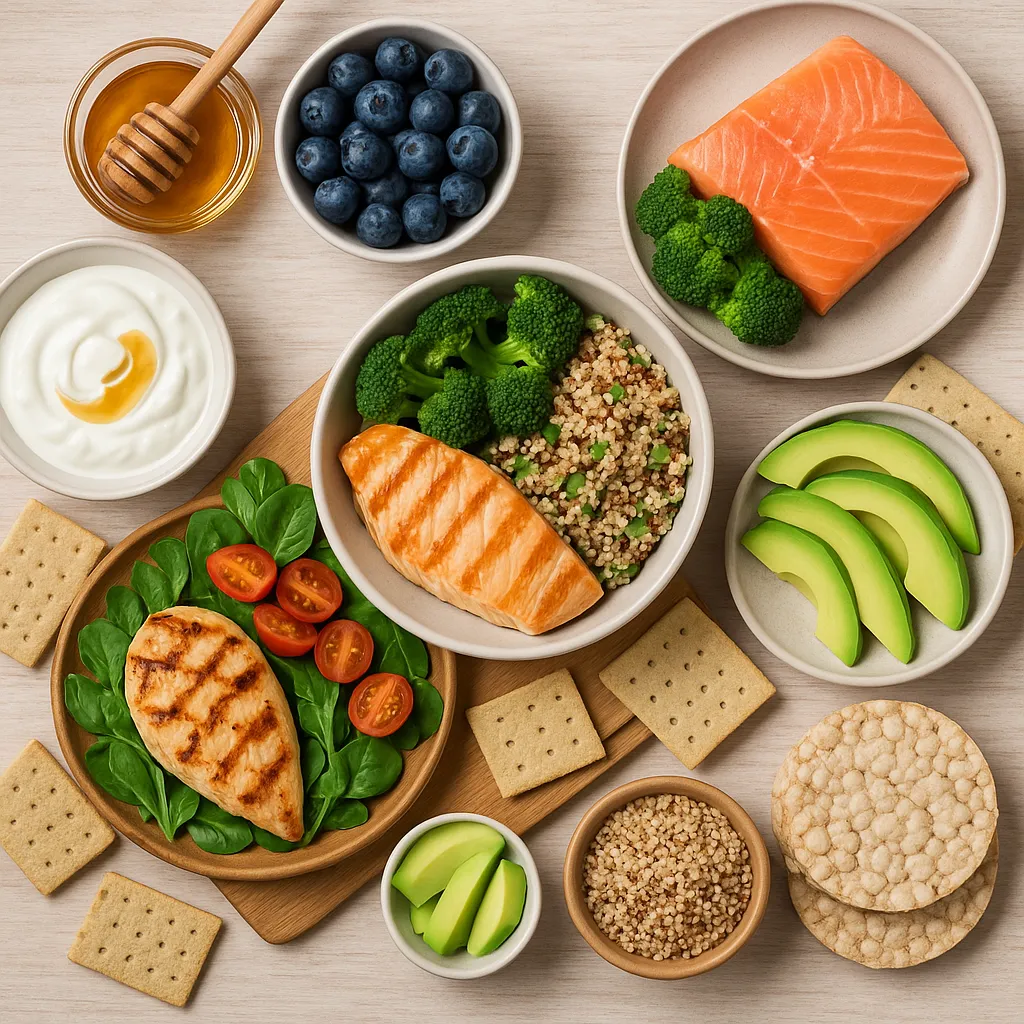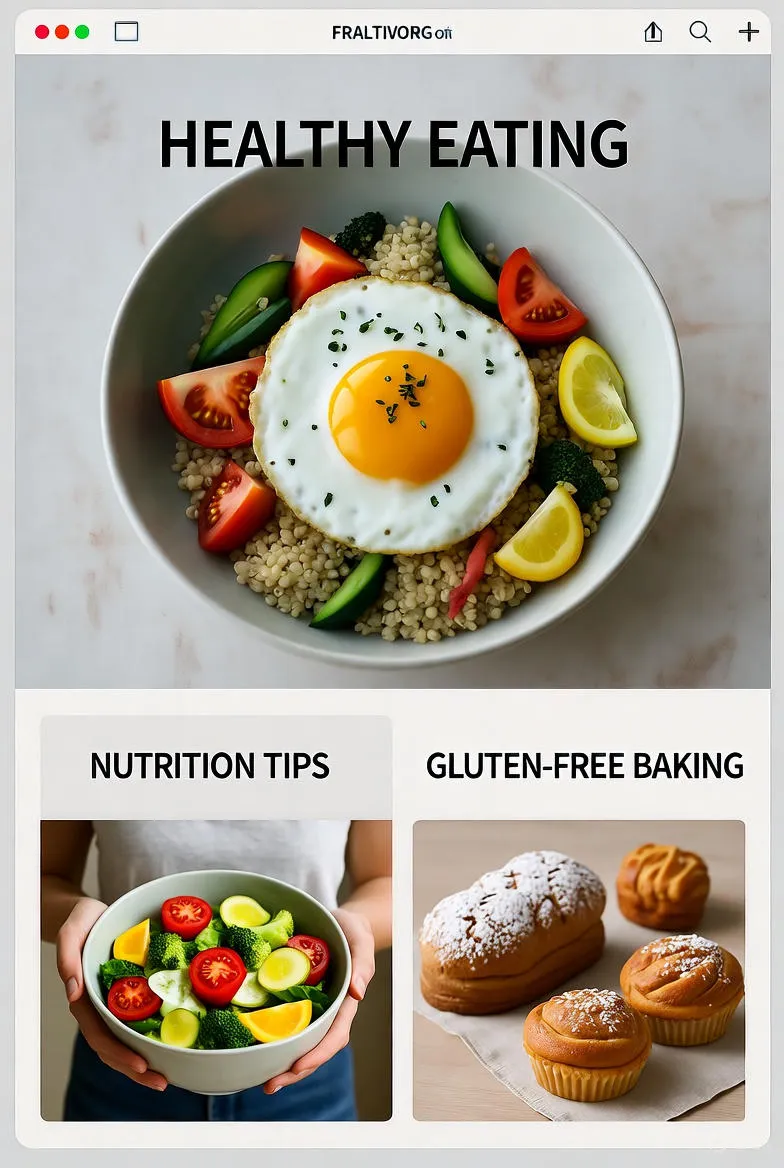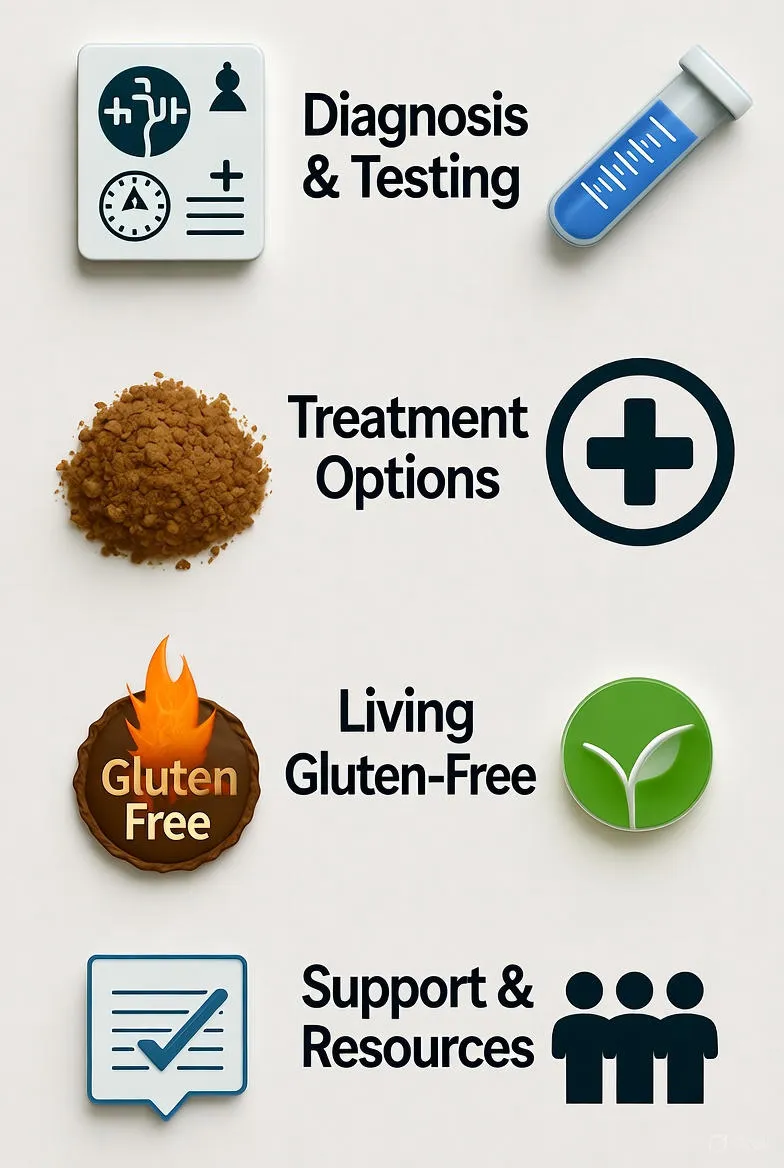Celiac Disease Diet Plan Weekly: A Complete Guide to Gluten-Free Living
Discover a complete weekly gluten-free diet plan for celiac disease. Learn how to build balanced meals, avoid gluten, and maintain long-term digestive health.

Celiac disease is a chronic autoimmune condition in which the ingestion of gluten leads to damage in the small intestine. Gluten is a protein found in wheat, barley, and rye, and for individuals with celiac disease, even tiny amounts can trigger inflammation and intestinal harm. This condition affects nutrient absorption, leading to a variety of symptoms such as fatigue, anemia, bloating, and digestive distress. A well-structured weekly diet plan is crucial for people diagnosed with celiac disease to manage their health, promote healing, and maintain nutritional balance.
Understanding the Basics of a Celiac Diet
The foundation of a celiac-friendly diet lies in the complete elimination of gluten-containing foods. This includes avoiding not only obvious sources like bread, pasta, and pastries made from wheat, but also hidden sources found in sauces, dressings, and processed foods. Instead, the diet emphasizes whole, naturally gluten-free foods such as fruits, vegetables, lean meats, fish, legumes, nuts, seeds, and certified gluten-free grains like rice, quinoa, and millet.
Essential Nutrients to Focus On
People with celiac disease often struggle with nutrient deficiencies due to intestinal damage. The following nutrients are especially important:
- Iron: Helps prevent anemia. Sources include spinach, lentils, and fortified gluten-free cereals.
- Calcium and Vitamin D: Support bone health. Found in dairy products, fortified plant milks, and sunlight exposure.
- B Vitamins: Including folate and B12, essential for energy and metabolism. Sources include eggs, fish, and gluten-free whole grains.
- Fiber: Promotes digestive health. Found in fruits, vegetables, and gluten-free grains like quinoa and brown rice.
Weekly Celiac Disease Diet Plan
Below is a sample 7-day gluten-free meal plan designed to ensure variety, nutrition, and satisfaction while keeping gluten completely out of your diet.
Day 1
- Breakfast: Greek yogurt with honey, blueberries, and chia seeds.
- Lunch: Grilled chicken salad with mixed greens, cherry tomatoes, and olive oil dressing.
- Dinner: Baked salmon with steamed broccoli and quinoa.
- Snack: Rice cakes with almond butter.
Day 2
- Breakfast: Oatmeal made from certified gluten-free oats, topped with banana slices and cinnamon.
- Lunch: Lentil soup with a side of gluten-free crackers.
- Dinner: Stir-fried tofu with mixed vegetables and brown rice.
- Snack: Apple slices with peanut butter.
Day 3
- Breakfast: Smoothie with spinach, almond milk, frozen berries, and protein powder (gluten-free).
- Lunch: Turkey lettuce wraps with avocado and tomato.
- Dinner: Gluten-free pasta with tomato basil sauce and grilled shrimp.
- Snack: Trail mix with nuts and dried fruit.
Day 4
- Breakfast: Scrambled eggs with spinach and gluten-free toast.
- Lunch: Quinoa salad with chickpeas, cucumbers, and lemon dressing.
- Dinner: Grilled steak with sweet potato fries and green beans.
- Snack: Yogurt with sunflower seeds.
Day 5
- Breakfast: Gluten-free pancakes topped with strawberries and maple syrup.
- Lunch: Baked potato topped with cottage cheese and chives.
- Dinner: Roasted chicken with carrots and brown rice.
- Snack: Carrot sticks with hummus.
Day 6
- Breakfast: Smoothie bowl with granola (gluten-free) and kiwi.
- Lunch: Tuna salad with gluten-free crackers.
- Dinner: Grilled lamb chops with mashed cauliflower and asparagus.
- Snack: Fresh orange slices.
Day 7
- Breakfast: Poached eggs with avocado on gluten-free bread.
- Lunch: Quinoa bowl with roasted vegetables and tahini sauce.
- Dinner: Baked cod with wild rice and sautéed spinach.
- Snack: Mixed nuts and a handful of raisins.
Tips for Success
- Plan Ahead: Meal prepping ensures that you always have gluten-free options ready, reducing temptation or mistakes.
- Read Labels Carefully: Gluten can appear under various names, such as malt flavoring, brewer’s yeast, or modified food starch.
- Cross-Contamination Awareness: Keep separate toasters, utensils, and cutting boards for gluten-free foods.
- Eat Naturally Gluten-Free Foods: Whole fruits, vegetables, meats, and grains are always the safest choices.
- Consult a Dietitian: A nutrition professional can tailor your diet to your specific health needs.
Dining Out and Social Events
Eating outside the home can be challenging for those with celiac disease. However, with proper communication and research, it is entirely manageable. Many restaurants now offer gluten-free menus or are willing to accommodate special requests. Always inform your server of your condition, verify cooking methods, and ask about cross-contact precautions. Carry gluten-free snacks when traveling or attending events to ensure you have safe food options.
Maintaining Long-Term Health
Following a strict gluten-free diet not only helps manage symptoms but also prevents complications such as osteoporosis, infertility, and intestinal cancer. Over time, the small intestine heals, and nutrient absorption improves, restoring energy levels and overall well-being. Regular medical follow-ups, blood tests, and check-ins with a gastroenterologist are essential to monitor recovery and health progress.
Common Pitfalls to Avoid
- Consuming products labeled ‘wheat-free’ but not ‘gluten-free.’
- Neglecting hidden sources of gluten in medications or supplements.
- Assuming all oats are safe—only certified gluten-free oats should be consumed.
Conclusion
Living with celiac disease requires vigilance and dedication, but it can also lead to a healthier lifestyle centered on natural, whole foods. A weekly gluten-free diet plan not only ensures balanced nutrition but also supports intestinal healing and enhances overall quality of life. With knowledge, preparation, and mindful eating, those with celiac disease can thrive and enjoy delicious, nourishing meals every day.


